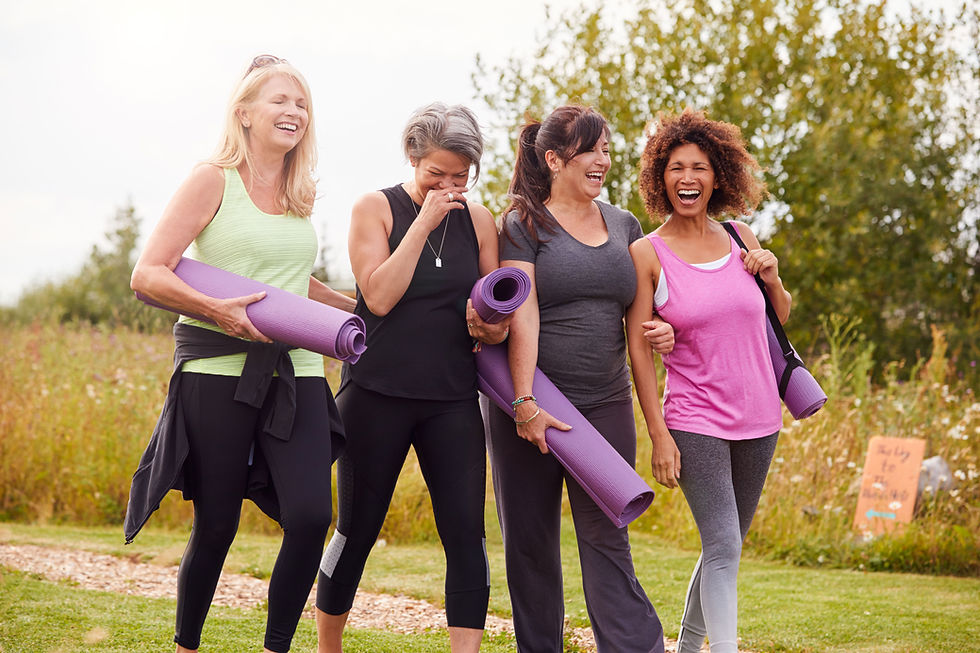How to Create Your Home Yoga Practice
- Jessica Lucey

- Feb 1, 2019
- 3 min read
Updated: Feb 6, 2019
“Ugh, this sucks,” were the words I told myself as the ship moved with the waves and took me out of tree pose. No amount of “press the floor, lift the core” was going to hold me up. I was hiding in the cycling room at 10 pm hoping no one would see me as I struggled to find my balance in everything yoga. Some time during the six months I was living on a ship, I decided I was going to start my own personal yoga practice. There were no yoga classes --- in person, online, on DVD, or otherwise. All I had were my memories of classes I took, my desire to get that after yoga feeling, and my wavering determination to see it through. Luckily, I stuck with it and now find so much joy, freedom, and exploration in my own home practice.
While your story may be different, the desire to start spreading your own wings and put the “personal” in “personal practice” is still there. However, you're not quite sure of where to go from there. Well, here’s the bad news: there’s no set formula for what to do because everyone is different. The good news is that you're not starting from scratch! Here are five steps to get you through beginning your own practice.

1. Check in with yourself. Sit in stillness and bring all parts of your body, mind, and being to where you are at the present moment. This is your chance to discover what type of movement your body’s calling for and the amount of energy you want to use. It’s the difference between realizing if you’re needing a fast paced vinyasa flow or a grounding restorative practice. There have been many times where I wanted to start off with a vinyasa practice, but then realized what my body really needed that day was to take it easy and be in supported fish pose.
2. Bring movement into the body and warm up. Depending on how you feel that day, this can be anything from neck circles to cat/cow to sun salutations.
3. Stay connected to the breath and the body as you move through your practice. This can be a time of prepping the body for a peak pose: think about what needs to be stretched or strengthened and go from there. Alternatively, it can be a time of focusing on one part of the body: hips, hamstrings, chest opening, etc. Whatever you do, keep breathing.

4. Begin slowing the heart rate if you brought it up. At this point, the body is warmer and more supple than when you started. This is a wonderful time to add in some longer held, supported postures like supine twists, forward folds, or legs up the wall.
5. Spend time in savasana. This is arguably the most important part of the yoga practice. In fact, in Judith Hanson Lassiter’s super busy day sequence, a five minute savasana is the only thing to do. You know how sometimes we take the time to reflect on what we did over a vacation, put it in our memories, find the lessons, and (whether consciously or subconsciously) integrate those experiences into who we are? This is the body’s way of doing that and so much more.

If you still have no idea where to begin and you’re set on practicing at home or on the go; practice along with online classes, pull inspiration from a live class you attended, or do a set sequence. After I figured out that what I’d been trying to practice was the Ashtanga Primary Series, I printed out all the postures and practiced with my print out. As time passed, I gained the confidence to move without the printed guide. Then my curiosity of all the other forms of movement, postures, and ways to practice grew. I began making up my own sequences and listening to my body even more. If you continue to stay with a set sequence, that’s perfectly fine too.
Remember to have fun and soften the expectations you put on yourself. It’s not about perfection. As Jigar Gor says, “Yoga is not about touching your toes, it is what you learn on the way down.” If you continue with your personal practice, you’ll come out with a better understanding of your own body, discover how and where you need support, meet both positive and negative aspects of your mind, and probably have even more questions to ask your teacher the next time you go to class. Ultimately, it’s about learning to trust yourself, discovering that connection with who you are at the core of your being, and engaging in the world off the mat with that new knowledge.



Comments